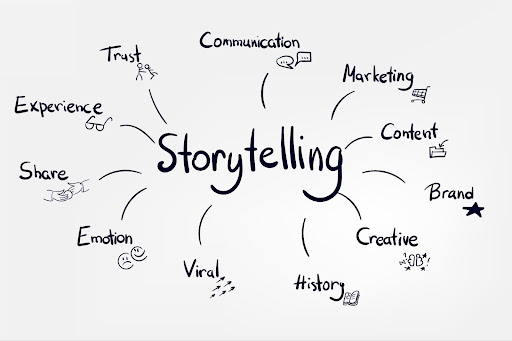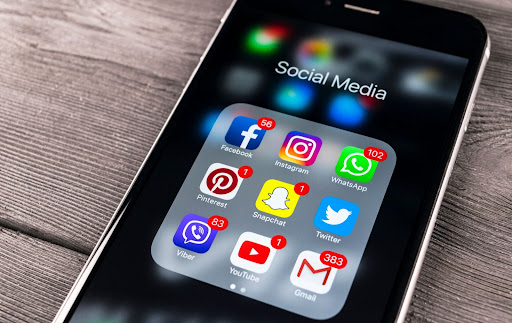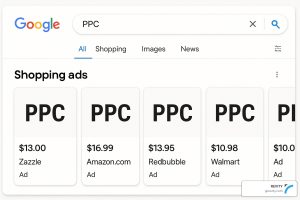As competition in the business to consumer industry increases, delivering a seamless customer experience is more important than ever.
Customers have come to expect personalized, relevant, and consistent interactions across all touchpoints, from initial browsing to post-purchase support. It is no longer enough to simply offer a great product or service; businesses must create and distribute valuable content across various channels to build lasting customer relationships.
This blog will explore key strategies for delivering a seamless customer experience with B2C marketing, including audience segmentation, personalized recommendations, customer feedback, social proof, and more.
By implementing these strategies, you can build a loyal customer base, increase customer satisfaction and loyalty, and ultimately drive sustained business growth.
Let’s dive in!
Business to Consumer Marketing: What Is It?
Business to consumer (B2C) marketing refers to the strategies and tactics used by companies to promote and sell their products or services directly to individual consumers. In this type of marketing, the target audience consists of end-users who make purchasing decisions for personal or household use.
B2C marketing focuses on creating and maintaining a strong connection between the brand and the consumer, aiming to understand consumer needs, preferences, and buying behaviors to develop effective marketing campaigns.
It often employs channels like advertising, social media, email marketing, content marketing, and direct selling to reach and engage consumers.
The primary goal of B2C marketing is to attract, engage, and convert consumers into customers by highlighting the benefits and value of the products or services offered.
The marketing messages and strategies employed in B2C marketing are typically more emotional and consumer-oriented than business-to-business (B2B) marketing, as they aim to evoke positive emotions, create desire, and encourage impulse purchasing.
An effective B2C marketing strategy typically involves comprehensive market research, understanding consumer demographics, segmenting the target audience, creating compelling messaging, utilizing persuasive storytelling, and delivering a seamless customer experience.
By building relationships with individual consumers and enhancing brand loyalty, businesses can drive sales, increase brand awareness, and ultimately achieve long-term success in the consumer market.
Let’s look at how each aspect of a B2C marketing strategy works.
Understanding Consumer Demographics
Understanding consumer demographics is vital to any successful business to consumer marketing strategy. By analyzing demographic data, you can gain valuable insights into your target audience, allowing you to create more effective marketing campaigns that resonate with their needs and preferences.
Here are some steps to help you understand consumer demographics:
1. Conduct Market Research: Conduct comprehensive market research and gather data on your target audience’s demographics, including age, gender, income, education level, ethnicity, and location. This data can be obtained through surveys, focus groups, and online research tools.
2. Analyze Data: Once you have collected data, identify patterns and trends. Look for common characteristics among your target audience, such as age or gender.

3. Create Buyer Personas: Based on your analysis, create buyer personas, which are detailed profiles that represent your ideal target audience. These profiles should go beyond demographic characteristics and include behavioral data, such as buying habits and consumer preferences.
Here is an example of a buyer persona:
Name: Sarah
Demographic information:
- Age: 32
- Gender: Female
- Occupation: Marketing Manager
- Education: Bachelor’s degree in Marketing
- Income: $75,000 per year
Psychographic information:
- Personality: Ambitious, driven, organized, detail-oriented
- Values: Professional growth, work-life balance, convenience
- Hobbies/Interests: Travel, cooking, yoga, fashion, podcasts
Consumer Behavior:
- Shopping behavior: Prefers online shopping; price-sensitive; prefers subscription-based services; typically does research before purchasing.
- Attitudes toward your product/service: Interested in products/services that help her save time and make her daily routine more efficient; willing to pay a premium for high-quality products; prefers eco-friendly and sustainable options.
Goals:
- Professional: To advance her career to a leadership position in marketing.
- Personal: To maintain a healthy lifestyle despite her busy schedule.
Challenges:
- Balancing work and personal life.
- Finding time to cook healthy meals.
- Identifying and buying sustainable, eco-friendly products.
Where to Find Her:
- LinkedIn groups related to marketing.
- Online health and wellness communities.
- Social media platforms, especially Instagram and Pinterest.
Based on this profile, Sarah is a potential buyer for products/services that offer convenience and help her achieve her personal and professional goals. She values sustainability and prefers eco-friendly options.
Marketing campaigns highlighting the efficiency, time-saving benefits of products/services, and their eco-friendliness will likely appeal to her. Social media ads and influencer partnerships are also effective ways to connect with her.
Now that you know what a buyer persona looks like, you can create them for your ideal customer, making them specific to what you offer.
4. Monitor and Update Data: It’s essential to continually monitor and update demographic data as consumer behavior and preferences change over time. Just like you evolve, so will your ideal customer.
By understanding your target audience’s demographics, you can create more effective marketing campaigns that resonate with their needs and preferences. This can help you build stronger relationships with your customers, increase sales, and, ultimately, achieve long-term success in the consumer market.
Segmenting the Target Audience

Segmenting your target audience involves dividing your consumer base into distinct groups or segments based on specific characteristics or behaviors.
For example, you wouldn’t advertise the same products to a college student as you would a stay-at-home mom. But, say you’re an online store selling purses and backpacks. Both the college student and the stay-at-home mom could be ideal customers — you’ll want to advertise to them separately, though.
This segmentation allows you to create more targeted marketing efforts and tailor your messaging to meet each segment’s specific needs and preferences.
Here are some steps to help you effectively segment your target audience:
- Define Your Segmentation Criteria: Identify the variables or criteria you will use to segment your audience. This can include demographic factors like age, gender, income, and location, or psychographic factors like interests, lifestyles, values, or behavior patterns. Choose relevant criteria for your business and align them with your marketing objectives.
- Collect Data: Gather data on your target audience using various methods, such as surveys, interviews, market research, or data analytics tools. Collect information on the segmentation criteria you have identified.
- Analyze and Group: Analyze the data collected and group individuals or households with similar characteristics into segments. Look for patterns, common traits, or shared behaviors to help you define your segments. It is common to have multiple segments that represent different customer profiles.
- Develop Buyer Personas: As discussed above, creating buyer personas is important. Create detailed ones for each segment.
- Tailor Marketing Strategies: Once you have defined your segments and created buyer personas, tailor your marketing strategies and messages to address each segment’s specific needs and preferences. This may involve adapting your messaging, channels, advertising campaigns, content, and product offerings to resonate with each segment.
- Test and Refine: Continuously monitor and evaluate the effectiveness of your segmentation and marketing campaigns. Test different strategies and messaging for each segment to identify what works best. Refine and adapt your approach based on customer feedback and market changes.
Segmenting your target audience allows you to personalize your marketing efforts, improve customer engagement, and increase the effectiveness of your campaigns.
By understanding each segment’s unique characteristics and needs, you can deliver more relevant and impactful messaging, ultimately driving greater customer satisfaction and loyalty.
Creating Compelling Messaging
Your messages should resonate with your target audience and communicate the value of your products or services in a way that motivates them to take action.
Here are some steps to help you create compelling messaging:
- Clearly Define Your Value Proposition: Your value proposition should communicate your product or service’s unique benefit to your target audience. It should highlight what sets you apart from your competitors and what makes your offerings valuable to the consumer. Here’s an example of a unique value proposition: “Our online grocery delivery service offers a unique solution for busy professionals who value convenience and quality. Unlike traditional grocery stores, we bring the supermarket to your doorstep, saving you valuable time and effort. With our wide selection of fresh produce, pantry staples, and household essentials, you can trust that every item is handpicked with care. Our intuitive mobile app allows you to easily browse, customize your order, and schedule deliveries that fit your busy schedule. Experience the convenience and satisfaction of hassle-free grocery shopping with our reliable and efficient delivery service.” In this example, the unique value proposition targets busy professionals who value convenience and quality. The proposition highlights the key benefits of the online grocery delivery service, which include saving time and effort, a wide selection of fresh products, customization options, and an intuitive mobile app. By emphasizing these unique features, the value proposition sets this service apart from traditional grocery shopping, giving customers a compelling reason to choose this particular offering.
- Keep It Simple: Consumers are often bombarded with messaging, so it’s essential to keep your messaging straightforward. Use clear language, avoid jargon, and focus on communicating the most important aspects of your product or service. The unique value proposition we outlined above is a perfect example of keeping it simple.
- Make It Visual: Visuals can help to make your messaging more engaging and memorable. Use images, videos, or graphics to complement your messaging and communicate your value proposition in a way that is visually appealing and memorable.
- Test and Refine: Continuously test your messaging to see what resonates best with your target audience. You can use A/B testing, focus groups, or surveys to gather feedback and insights. Refine your messaging based on the feedback to ensure it remains fresh, engaging, and effective.
By following these steps, you can create compelling messaging that resonates with your B2C audience, communicates the value of your product or service, and motivates consumers to take action. This can help you drive greater consumer engagement, sales, and brand recognition.

Utilizing Persuasive Storytelling
Storytelling allows you to create a narrative that resonates with consumers, helps them understand your brand or product, and builds an emotional connection.
Here’s how you can effectively utilize storytelling in your B2C marketing.
- Identify Your Brand Story: Start by identifying your brand story. What is your brand’s purpose, mission, and values? How did your brand come into existence? What drives your brand’s commitment to your customers? Your brand story should communicate who you are and what you stand for.
- Connect With Consumers’ Emotions: Storytelling allows you to tap into consumers’ emotions, creating a more memorable and impactful experience. Consider how you can evoke emotions such as joy, nostalgia, or empathy in your storytelling. This emotional connection can lead to stronger brand loyalty and engagement.
- Use a Hero’s Journey: A common storytelling framework is the hero’s journey. This involves presenting your customers as the heroes of their stories, with your brand or product as the guide that helps them overcome challenges and achieve their goals. This narrative structure captures consumers’ attention and makes your brand relatable.
- Showcase the Value of Your Product or Service: Weave your product or service into the story to showcase its value and benefits. Highlight how it solves a problem, improves lives, or fulfills a desire. Ensure the consumer can see themselves benefiting from your product or service.
- Utilize Different Platforms: Share your stories across various marketing platforms to maximize reach and engagement. Use social media, blog posts, videos, or interactive content to bring your stories to life. Tailor your storytelling approach to match the platform and audience preferences.
- Be Authentic and Transparent: Consumers appreciate authenticity and transparency in storytelling. Be genuine and honest in your storytelling efforts. Avoid overly promotional content and focus on building genuine connections with your audience.
- Incorporate User-Generated Content: Encourage user-generated content by encouraging your customers to become part of your brand story. Share customer success stories, testimonials, or user-submitted content that showcases how your brand or product has positively impacted their lives.
- Measure and Refine: Continuously measure the impact of your storytelling efforts. Track engagement metrics, sales, and brand sentiment to determine what resonates best with your audience. Refine your storytelling approach based on the feedback and data you collect.
By utilizing storytelling in your B2C marketing, you can capture consumers’ attention, create an emotional connection, and differentiate your brand from competitors. Craft compelling narratives that align with your brand values and resonate with your target audience to drive engagement and loyalty.
Delivering a Seamless Customer Experience
Delivering a seamless customer experience with B2C content marketing involves creating and distributing valuable, relevant, and consistent content across various channels. Here are some strategies to help you achieve this:
1. Develop a content strategy: Set clear goals and objectives for your content marketing efforts. Define the types of content you will create, the channels you will use to distribute it, and the frequency at which you will publish. Develop a content calendar to ensure consistent delivery of content to your audience.
2. Create compelling and valuable content: Produce high-quality content that provides value to your audience. Make it informative, educational, entertaining, or inspiring. Use storytelling techniques to engage and connect with your audience emotionally. Incorporate visuals, videos, infographics, and other multimedia elements to enhance the content experience.
3. Consistent branding and messaging: Ensure your content reflects your brand identity and conveys a consistent message across all channels. Maintain a consistent tone of voice, visual style, and brand personality. This consistency helps build brand recognition and fosters a sense of trust and familiarity with your audience.
4. Optimize for discoverability and engagement: Ensure your content is optimized for search engines to improve its discoverability. Use relevant keywords, optimize meta tags, and create compelling headlines.
Additionally, encourage engagement by allowing comments, sharing options, and calls to action that prompt further interaction and feedback from your audience.
5. Distribution across multiple channels: Distribute your content across various channels to reach your target audience in different stages of their customer journey. Utilize social media platforms, email marketing, blog posts, videos, podcasts, and other relevant channels.
Adapt your content format and messaging to fit the preferences and behaviors of your audience on each platform.
6. Measure, analyze, and optimize: Measure the performance of your content marketing efforts using metrics such as website traffic, engagement rates, conversion rates, and social media analytics.
Analyze the data to gain insights into what content is resonating with your audience and what needs improvement. Use these insights to optimize your content strategy and continually refine your approach.
By delivering valuable and consistent content that resonates with your audience and leveraging data-driven insights to improve your strategy, you can create a seamless customer experience with B2C content marketing. This can lead to increased engagement and loyalty, ultimately driving business growth.

Offer Personalized Recommendations
Offering personalized recommendations can significantly enhance your B2C content marketing efforts in several ways:
- Improved customer experience: Personalized recommendations provide customers with tailored suggestions based on their preferences, purchase history, browsing behavior, and demographic data. This enhances the customer experience by saving time and offering relevant solutions to their needs. It demonstrates that you understand their unique preferences, increasing their engagement and satisfaction with your brand.
- Increased relevance and engagement: The more relevant the content, the more likely customers are to engage with it. Personalized recommendations allow you to deliver content that aligns with customers’ interests and needs, increasing the likelihood of them consuming, sharing, and acting upon it. This boosts engagement metrics such as click-through rates, time spent on your website, and overall conversion rates.
- Drive cross-selling and upselling: Personalized recommendations can be powerful tools for cross-selling and upselling. By analyzing customer purchasing patterns and behavior, you can suggest complementary products or services that align with their previous purchases.
This encourages customers to explore additional offerings, increasing the potential for larger average order values and overall revenue per customer. - Retention and loyalty: Personalized recommendations help create a more personalized and tailored customer experience. This strengthens their loyalty and encourages repeat purchases.
You can cultivate long-term relationships, build trust, and increase customer retention by continuously providing relevant recommendations and offers. - Data-driven insights: When customers engage with personalized recommendations, it generates valuable data on their preferences, behaviors, and interests. You can leverage this data to refine your content marketing strategy, identify trending products or topics, and optimize your offerings to meet customer needs better. This data-driven approach enables you to make informed decisions and deliver content that resonates with your target audience.
- Word-of-mouth marketing: Personalized recommendations can have a positive impact on word-of-mouth marketing. When customers receive relevant and valuable suggestions, they are more likely to share their positive experiences with others, which can lead to referrals and new customer acquisition.
To effectively offer personalized recommendations, leverage customer data through segmentation and tracking mechanisms to effectively offer personalized recommendations. Use AI or machine learning algorithms to analyze data patterns and give accurate suggestions.
Implement recommendation engines, personalized email marketing campaigns, or on-site product suggestion modules to provide customers with tailored recommendations throughout their journey.
By offering personalized recommendations, you can enhance the customer experience, drive engagement, increase retention and loyalty, and gather valuable data to continually optimize your B2C content marketing strategy.
Take Your B2C Content Marketing to the Next Level With Revity Marketing Agency
At Revity Marketing Agency, we understand the power of compelling content in attracting and engaging your target audience. Our team of experts specializes in business to consumer content marketing strategies that deliver results.
From crafting personalized recommendations to driving customer engagement, we have the expertise and experience to help you succeed.
With our personalized approach and data-driven insights, we can tailor your content marketing strategy to your unique business goals and target audience. Whether you need blog posts, social media campaigns, or email marketing, we’ve got you covered.
Don’t miss out on the opportunity to enhance your customer experience, boost engagement, and drive growth. Join hundreds of satisfied clients who trust Revity Marketing Agency for their marketing needs.
Ready to get started? Contact Revity today to schedule a consultation and discover how we can transform your B2C content marketing strategy. Together, let’s take your business to new heights.
































